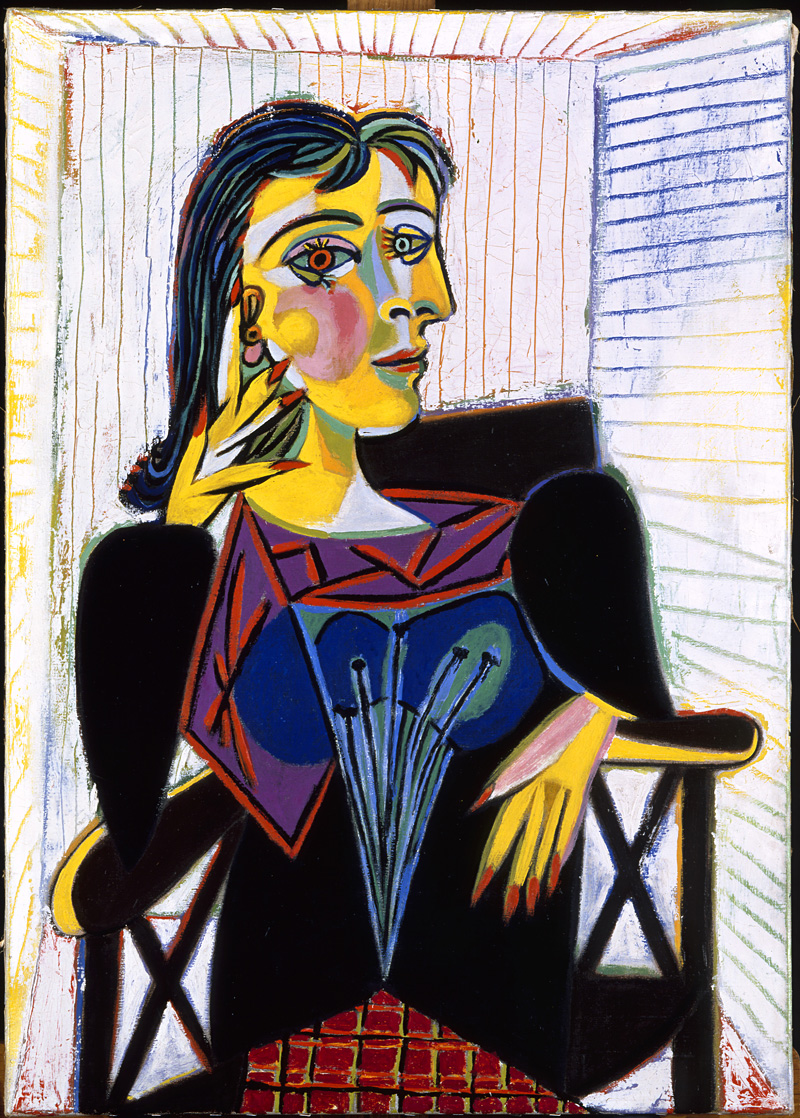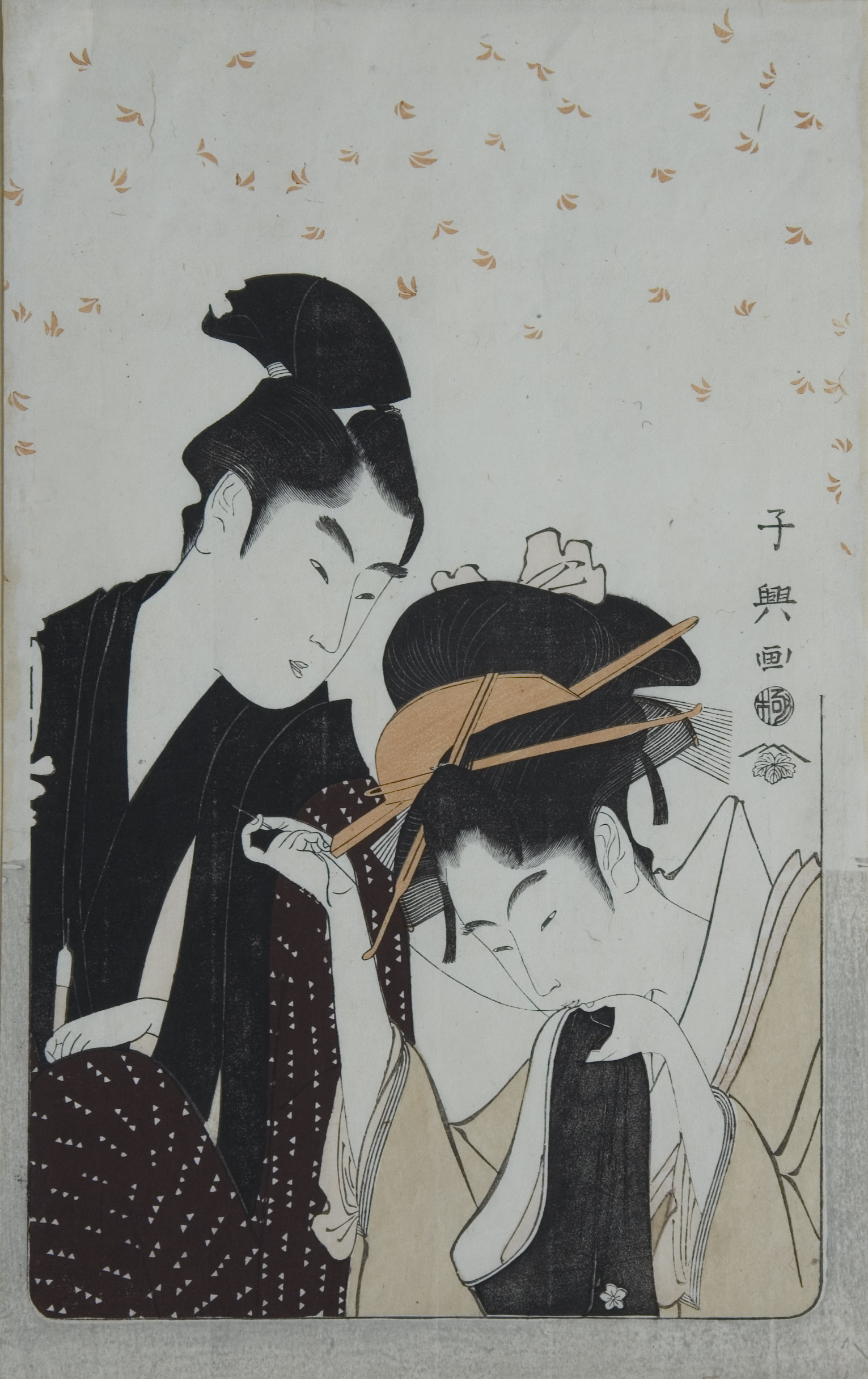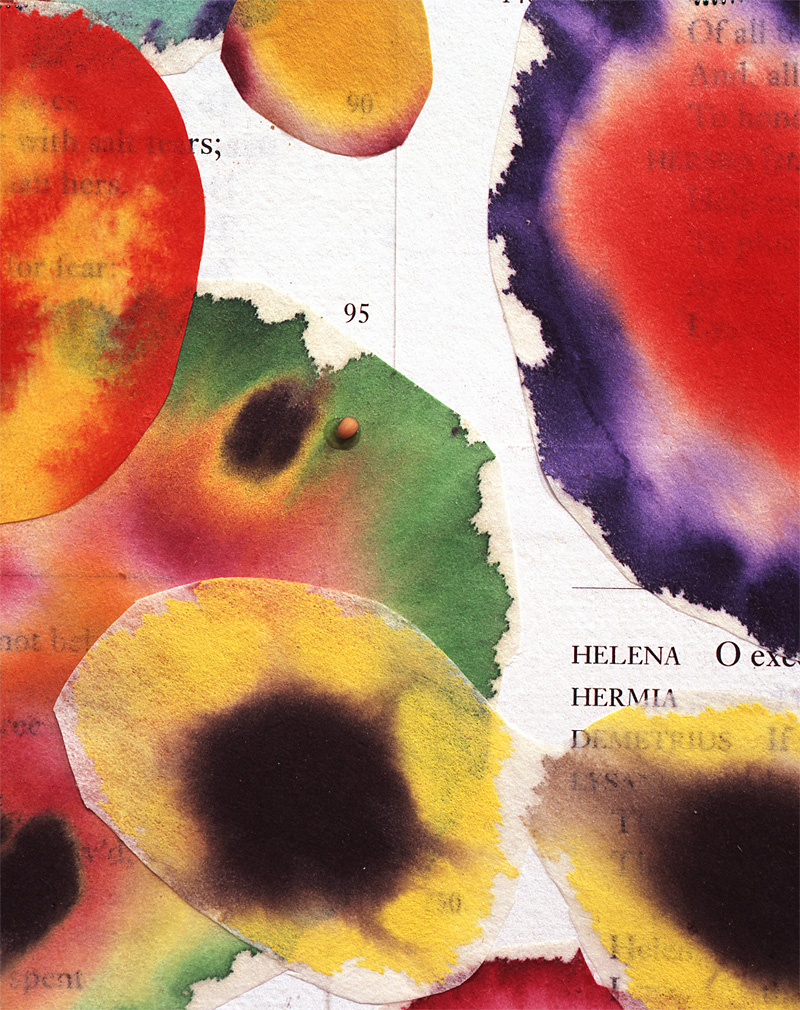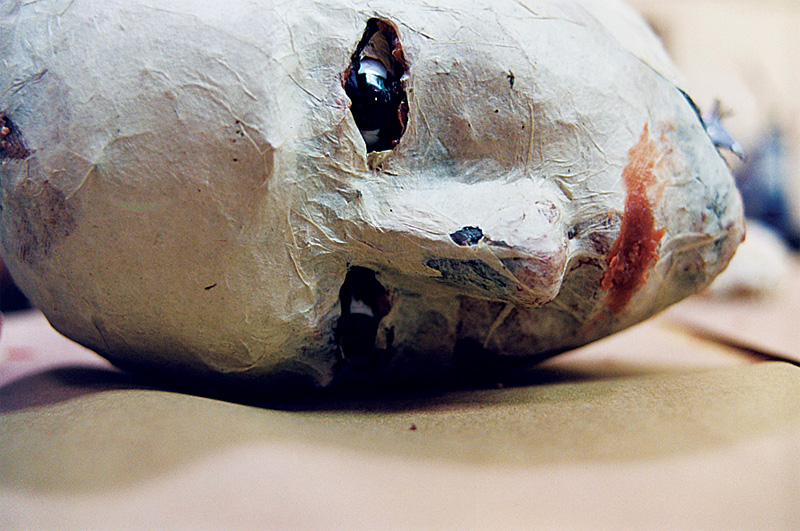THE AMAZINGLY ambitious “Artificial Life” show curated by Meg Schiffler at the gleaming new Consolidated Works space debuted last month and has another two weeks and some to go. The work that most justifies the show’s name is Los Alamos lab man Dr. Mark Tilden’s mechanical menagerie of robots. They’re not preprogrammed to perform specific tasks or shout, “Danger, Will Robinson!” They actually react to changes in their environment, intermittently clicking or hopping. Moving slowly, like reptiles, but with spontaneous reactions, they’re alive. Part of their delicate beauty is their intelligence.
Artificial Life: The Visual Art
Consolidated Works through November 30
You can only watch them so long before moving on, however. Shawn Wolfe’s video depicting “The Remover Installer” makes an almost opposite impression on the viewer— it fixes your attention with the inexorable motions of a strange apparatus that looks like a tape cassette with an eyeball. The video is sort of like a car commercial that shows the skeleton of a car and then the body coming in on top, with backdrops shifting from highway to desert and so on. Wolfe’s narrative is esoteric, but it makes a repetitive, balletic kind of sense: As if in a factory, the Remover Installer comes together, a scene of a tree felling is glimpsed, and then the gizmo takes on the grain of the wood behind it. The scene shifts to a butcher shop, and the Remover Installer takes on the quality of meat. It’s eerie and mysterious because it has an inexorable logic that makes its mechanical qualities seem human and its human ones seem mechanical.
That particular video works because we’re willing to accept it as documenting the real. That is less true of Con Works’ other video pieces, by Matt Steinke. You know how they’re made. Harsh, overexposed doll faces and toys are interspersed with static. Kind of fascinating, but we’ve seen it before, and it verges on effect for effect’s sake. The same goes for LA artist Mark Bennett’s blueprints of his notions of the homes and locations of TV shows like The Flintstones and Gilligan’s Island, and the US map annotated by The Fugitive‘s adventures. A well-done architectural rendering is always lovely, but the conceptual underpinning is a one-liner. Bennett doesn’t really add anything profound to the dialogue on what artificial life might mean. His blueprints will be popular, though, because they’re as accessible as the TV shows are.
More intriguing are Jim Rittiman’s constructions of skeletons of imaginary creatures made of bones from different animals, insects, and organic materials. “Reconstruction #10,” which looks like a tiny dinosaur with an empty skull and a sensitive face, is by far his standout. With a distinct, emotional tone and a frailty between life and death, it seems that the creature is reaching out, imploring, and there’s a jarring disjunction between its big hands and small face, turned slightly awkwardly aside. Trapped in its own body, it assumes a quality of life. Unfortunately, this poignant mortality is absent from his other works. In “Prey and Predator,” Rittiman ruins the illusion by sticking fake eyeballs in the creatures’ eye sockets. And when he places his skeletons in front of badly painted, kitschy backdrops, the little carcasses are forever caught somewhere between macram頡nd the science fair.
Sandy Skoglund, the biggest name in the show, is strangely ritualistic. She makes big, over-the-top Cibachrome images of huge, intricately textured tableaux, full of noisy, fake colors: Pepto-Bismol pink! Cheetos orange! Her gumball hues aren’t real, they’re almost sickeningly synthetic. In a room of blinding Yves Klein blue, Skoglund puts pink squirrels and her signature isolated human figures. In “Body Limits,” a man and woman completely wrapped in raw bacon seem to exist cut off from each other but blending in with the bacon that lines the walls—it’s as if their guts are on the outside. “Spirituality in the Flesh” features a hamburger room with a very believably sculpted human figure made of ground beef, sitting utterly alone, meditatively wearing a blue velvet dress and a gray wig. This combination of materials makes your skin crawl. Skoglund’s work is, at its best, pulsing with paranoia, frozen with claustrophobia and alienation, genuinely disturbing, and really quite sad. Her less disturbing images can get frivolous and gimmicky, as in “The Cocktail Party,” where the partygoers wear Cheetos-lined clothes.
Con Works provides the rare opportunity to view Skogland’s theatrical set “Shimmering Madness” with her more successful resulting photograph by the same title. Life-size human figures covered with brilliant jelly beans dance within walls festooned with faux butterflies. It is impressive for all the labor that went into it, but ultimately there are store windows just as impressive. But the tableau comes to life in Cibachrome, where the jelly-bean surfaces catch the light and blend into a glittering illusion akin to Seurat’s pointillism, proving that sometimes a set is just a set.
Con Works is governed by the bold idea that the boundaries between art forms are arbitrary—”Artificial Life” is the rubric for all the first round of shows, from visual art to theatrical performance. A welcome and impressive addition to the Seattle arts scene, it’s a jolt of new energy. Long may it live—artificially or otherwise.








